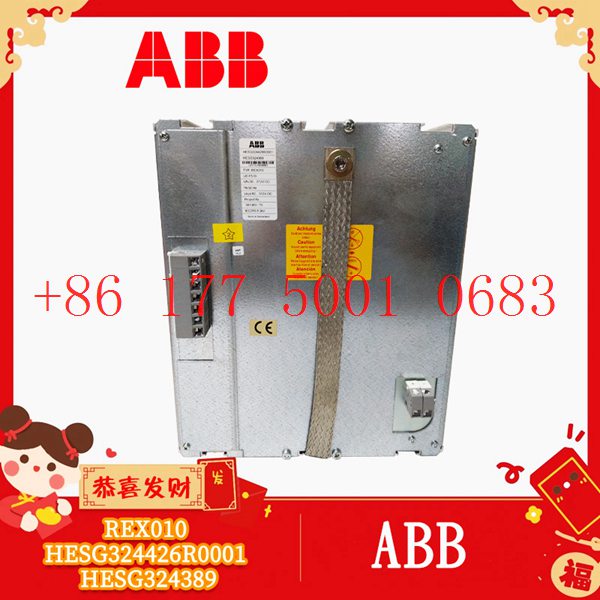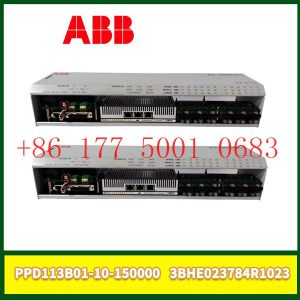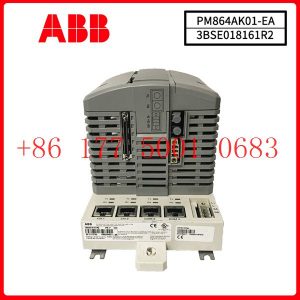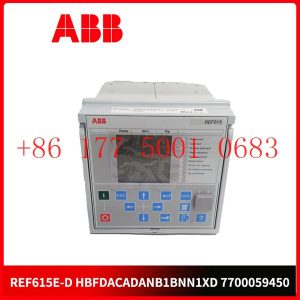Description
hardware flow control. It is an ideal choice in the field of industrial automation.
Implementation of communication between ABC industrial robot and PLC based on DeviceNet fieldbus technology
introduction
In modern production systems, industrial robots and PLCs need to communicate and collaborate to complete production tasks. That is, the
industrial robots output signals to the PLC, allowing the PLC to control related equipment to drive the robot”s front-end tools. This article
mainly analyzes the communication problems between ABB industrial robots and PLC based on DeviceNet fieldbus technology.
DeviceNet is a common network communication method in the field of automation. ABB industrial robots establish a network to communicate with
Siemens PLC based on the DeviceNet network.
1Configure DSQC652
There are mainly 5 types of standard I/0 boards commonly used in ABB industrial robots [2]. Except for the different addresses assigned to
them during setup, their configuration methods are basically the same. This article mainly analyzes the ABB standard I/0 board DS0C652, which
mainly builds communication modules based on the DeviceNet network. The DS0C652 board has a distributed I/O module with 16 digital input and 16
digital output interfaces. The board is installed in the ABB industrial robot control cabinet. First, define the specific operation steps of the DS0C652 board,
enter the teach pendant control panel, then enter the configuration menu (Figure 1), select the DeviceNetDevice menu, and add a template to enter Figure 2.
ABB standard I/0 board is hung on the DeviceNet
network, so the address of the module in the network must be set. The jumpers 6 to 12 of terminal x5 are used to determine the address of the module.
The available address range is 10 to 63. Modify the parameters in the template parameters to complete the DS0C652 board settings. Click the drop-down
menu to select the “Use value from template” row, select
“DS0C65224VDCI/0Device”, and then the parameters that need to be set include the address of the I/0 board in the bus.
Figure 1 Configuring DSQC652
2Configure signals and parameters
After completing the DS0C652 board setting, the I/0 signal setting will be performed. Setting the I/0 signal is the basis for establishing communication with
the PLC. The PLC communicates and transmits data with the ABB industrial robot through the I/0 signal and the DS0C652 board. As shown in Figure 3, in the
signal configuration interface, there are many default I/0 points after the system is established. Modification is not allowed. Click “Add” to add signals. When setting
input and output signals, their address range is 0~15. First, enter the signal menu in the configuration options to set the input and output types, and modify the corresponding parameters.
After completing the settings, the computer prompts that you need to restart the settings. If there are multiple signals that need to be defined and the waiting time
is long after restarting multiple times, you can click “Cancel” and wait for all signals to be defined before clicking the “Yes” button to restart. After the signal settings are
completed, click to select “Input and Output” in the ABB menu to check whether all signals have been set.
Figure 2 Configure DSQC652 parameters
Figure 3 Signal parameter settings
During the signal establishment process, attention should be paid to the DSoC652 port and PLC port addresses used, and the corresponding address table should be
established, as shown in Table 1. The robot interacts with the PLC through I/O signals. During the setting process, there must be no errors in the port and address number
of the PLC connected to the DSoC652. If the address is set incorrectly, the communication between the robot and the PLC will not work properly.
The entire robot teaching pendant setting process is shown in Figure 4.
https://www.xmamazon.com
https://www.xmamazon.com
https://www.plcdcs.com/
www.module-plc.com/
https://www.ymgk.com
SPSOE01 SOE Server Node Kit
SPSET01 DI and Time Synch Module
SPSED01 Digital input module
SPRIO22 Harmony Remote Rack I/O Module
SPQRS22 I/O module
SPFEC12 analog input module
SPDSO15 Digital output module
SPDSO14 digital output module
SPDSM04 Pulse In Module
SPDSI22 Digital input module
SPDSI14 Digital input module
SPDSI13 Digital Slave Input Module
SPCIS22 Control I/O Module
SPASO11 AO Module 14 CH, Supports 4-20mA, 1-5V
SPASI23 AI Module
SPTKM01 SOE Time Keeper Master
SPSEM11 SOE Master Module
SPNPM22 Network Processor Module
SPNIS21 Network Interface Module
SPIPT800 PN800 Transfer Module
SPIIT13 Local Transfer Mod
SPIIT12 Remote Transfer Mod
SPIIL02-L Local interface suite
SPIET800 Ethernet CIU Transfer Module
SPICT13A S+ Infi-net to Computer Interface Module
SPICI800 Ethernet CIU Kit
SPCPM02 RS-232 Serial interface
SPBRC410 Modbus Indicates the controller of the TCP interface
SPBRC400 Controller with Expanded Memory
SPBRC300 Controller module
SPBLK01 Control System module
PBA800 Process Bus Adaptor HN800
INTKM01 time Keeper Master Module
INSEM11 Sequence of Events Master Module
INNPM22 Network Processor Module
INNIS21 Network Interface Slave module
INIET800 Communication Module
INICT13A HR series controller
IMBLK01 Blank Faceplate HR Series
KEBA FM 265/A Profibus Interface module of the slave station
FC-TSHART-1620M Analog input module
FC-TSAI-1620M Analog input module
F7553 Coupling Module HIMA
HIMA 8-Channel Output Module F3330
HIMA F3236 igital Input Module
Flowserve F5-MEC-420 Feedback unit valve positioner
Mark V DS200DCFBG1BLC Power Supply Board
D674A906U01 FET3251COP1B4COH2 Automatic spare parts
GE D20 EME 10BASE-T Media Interfase Card
GE Multilin D20 EME Substation controller module
CML40.2-SP-330-NA-NNNN-NW Drive Controller









Reviews
There are no reviews yet.